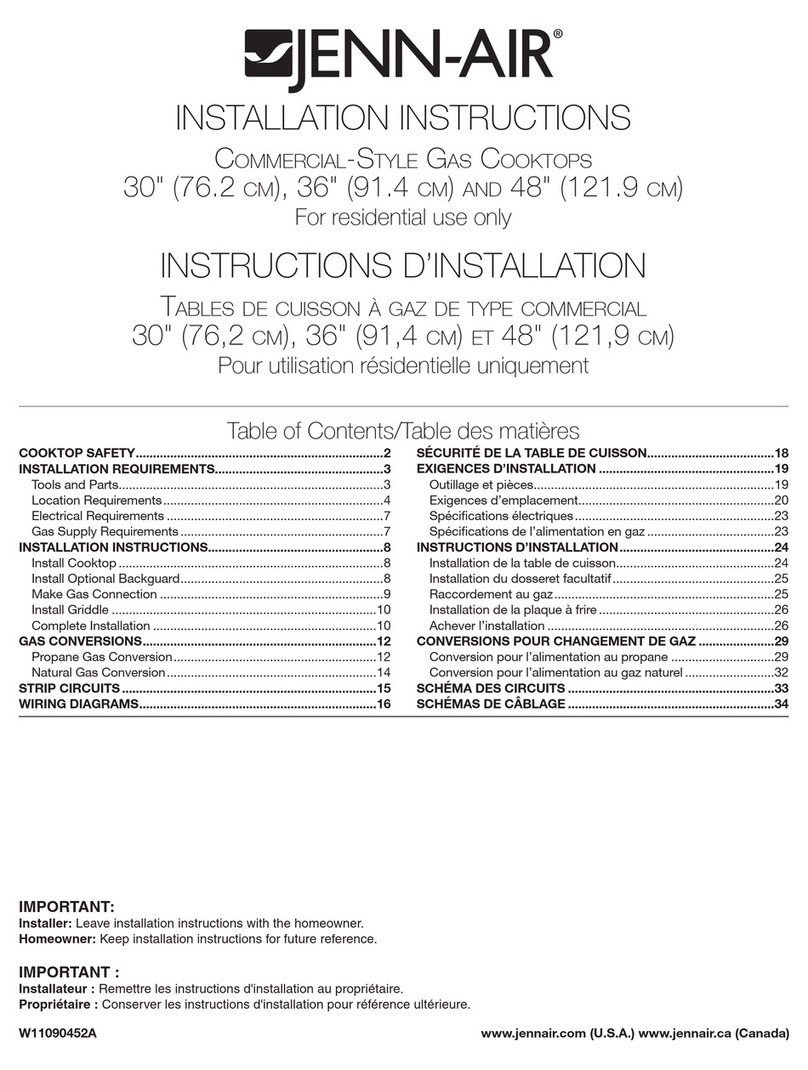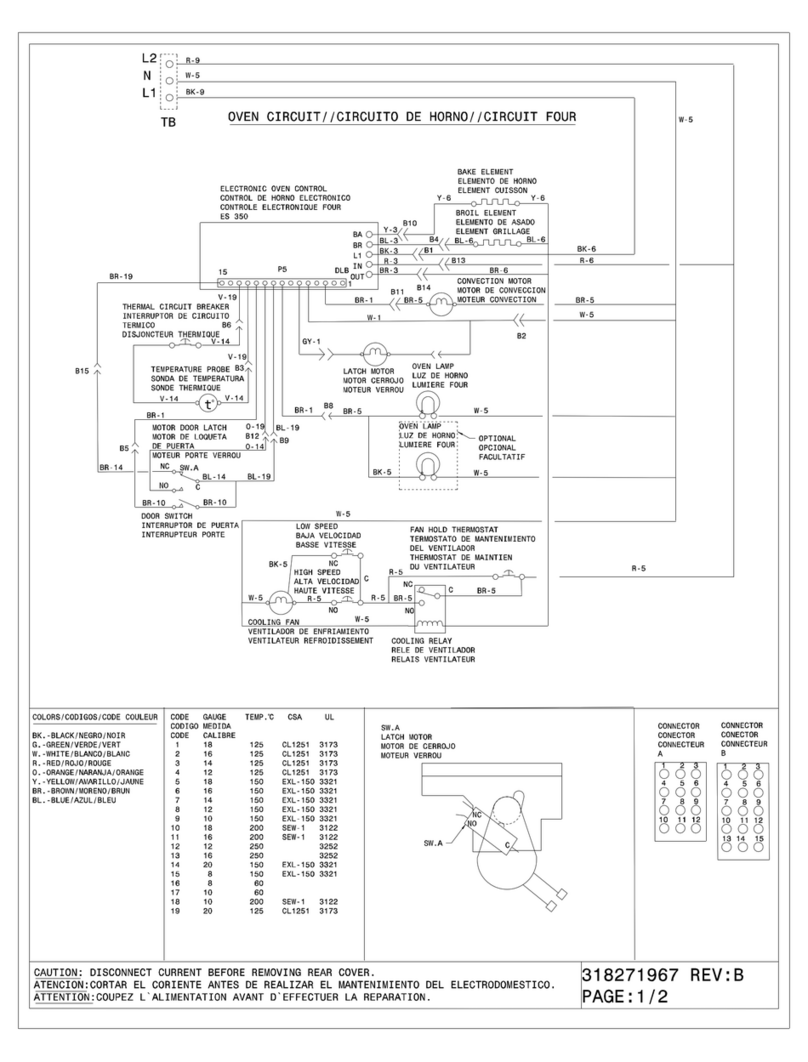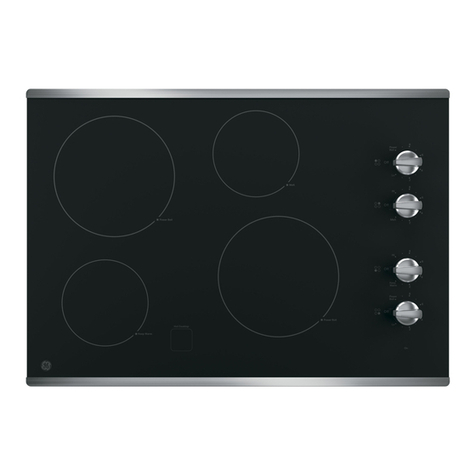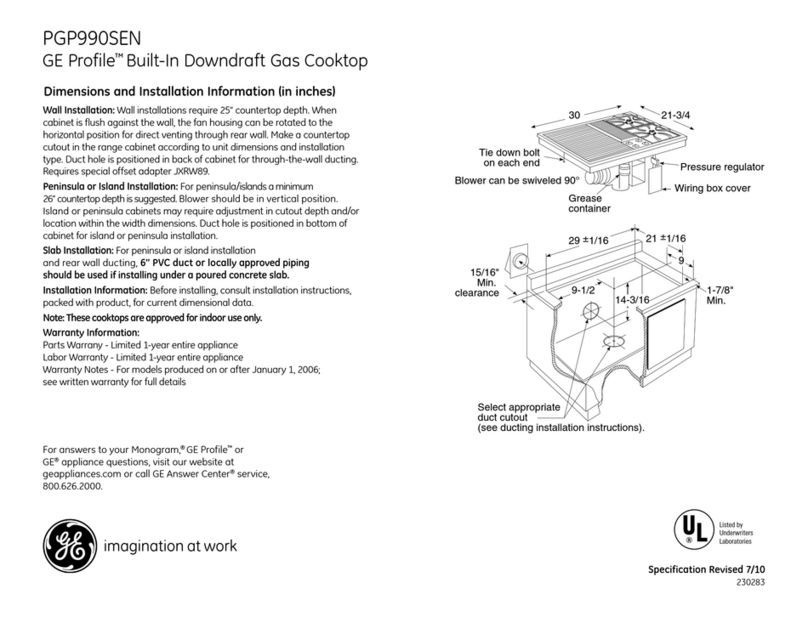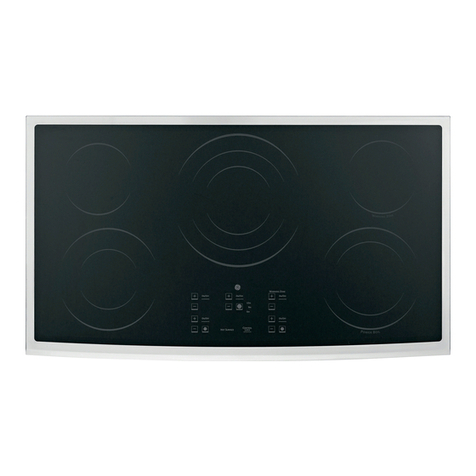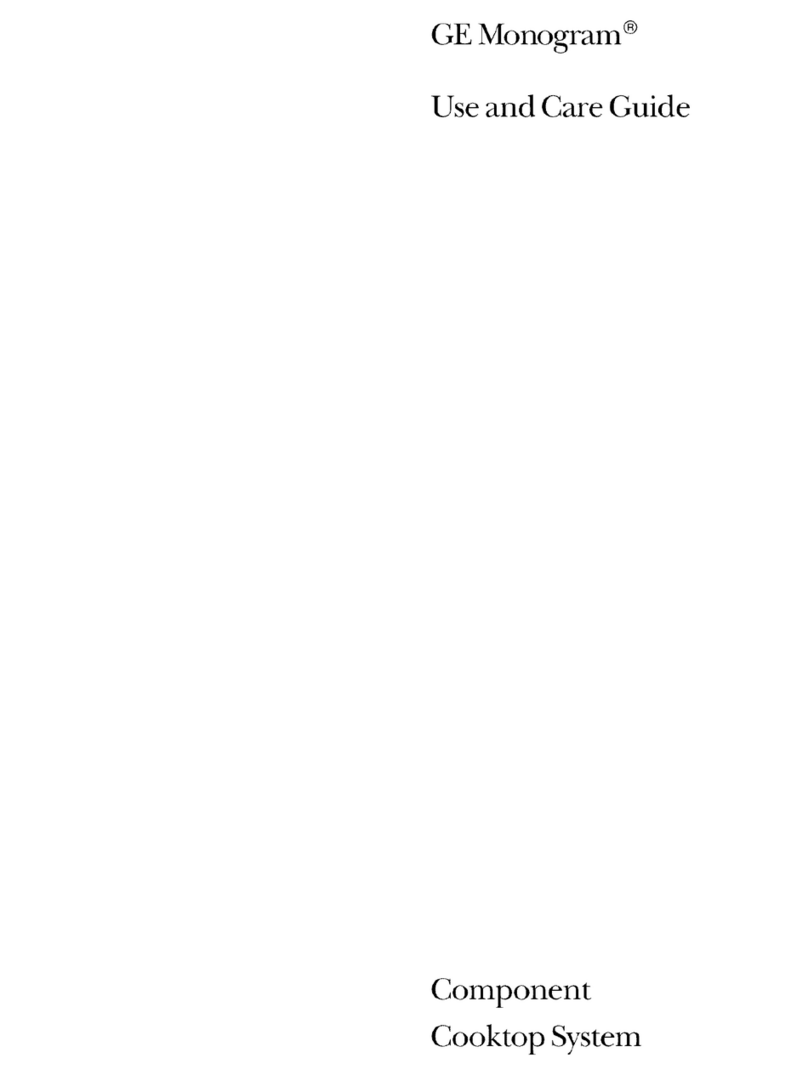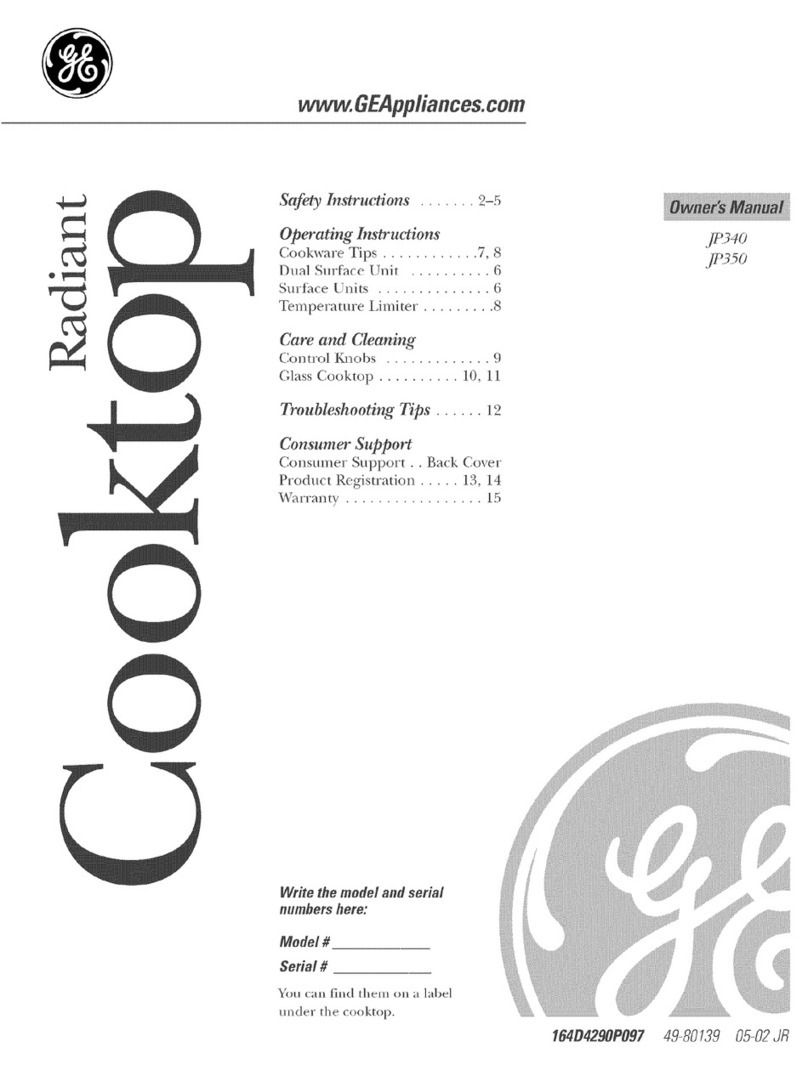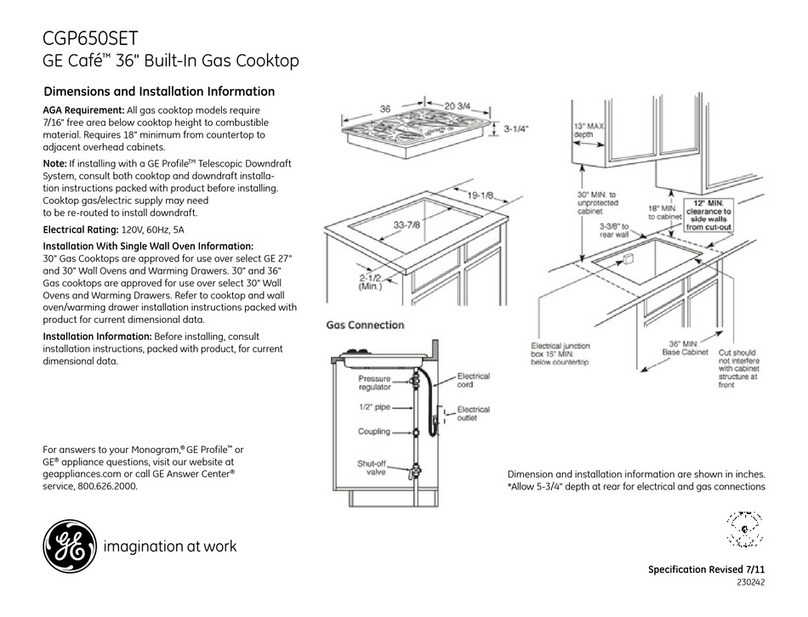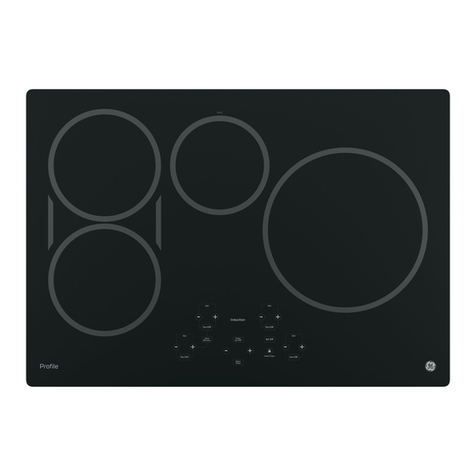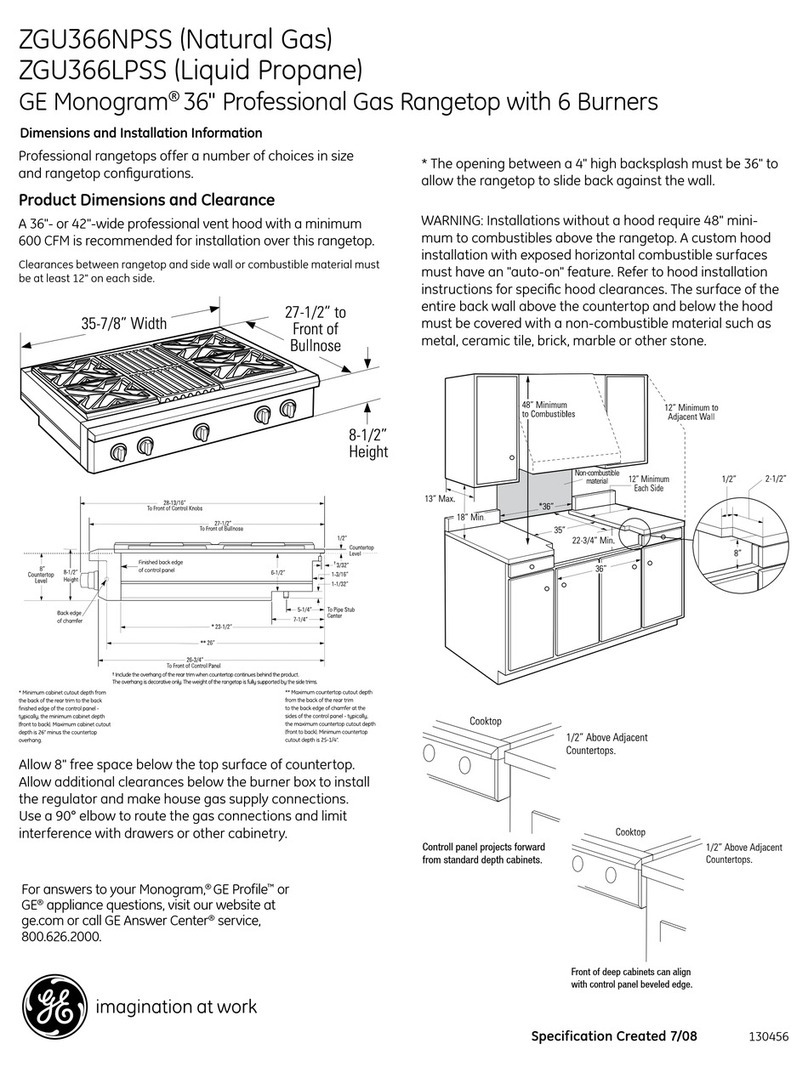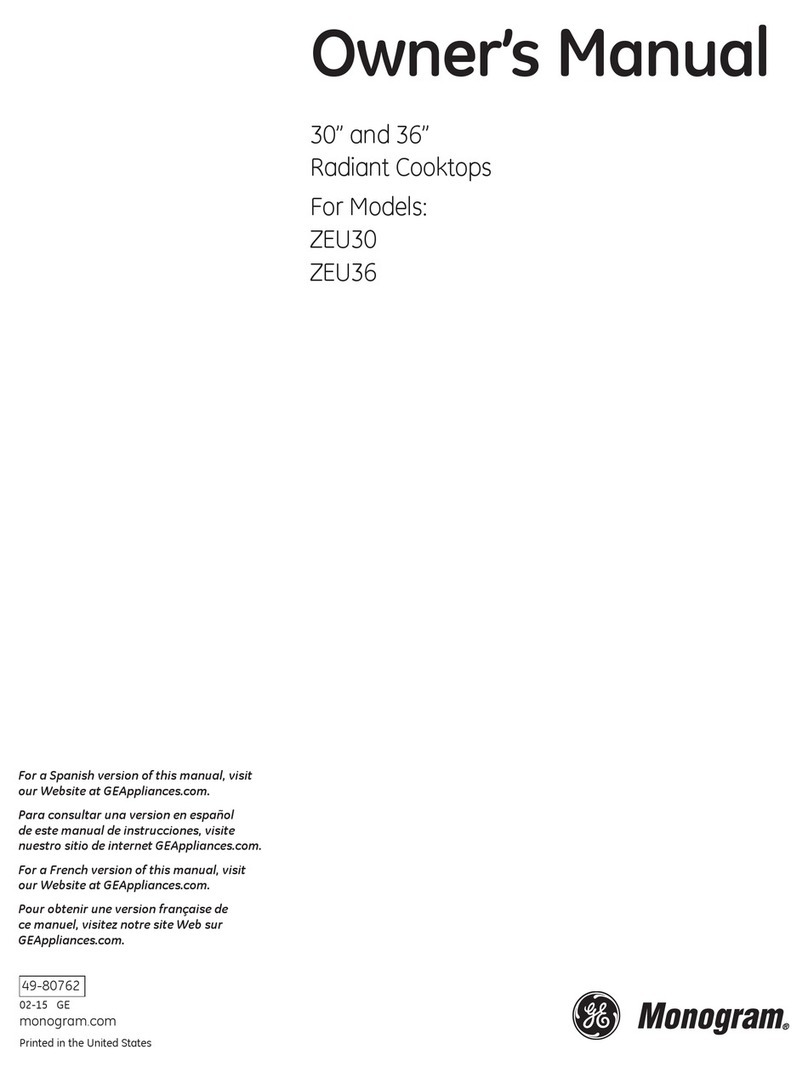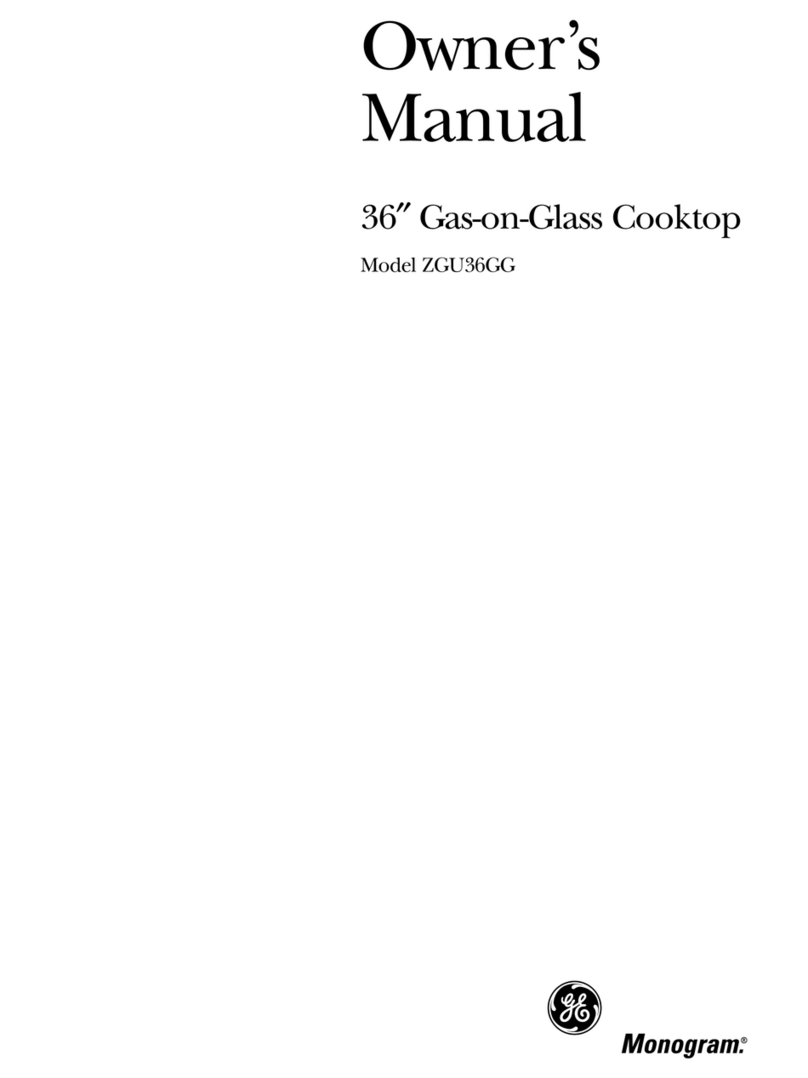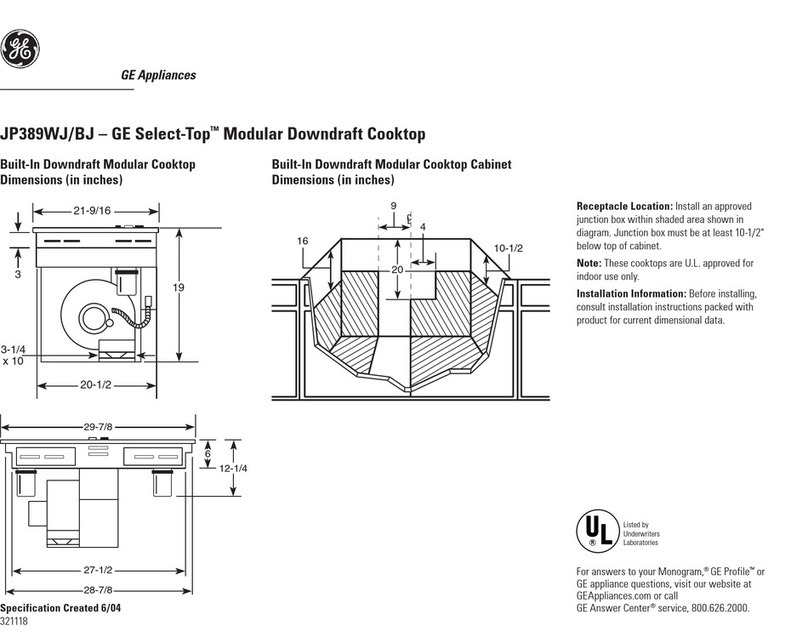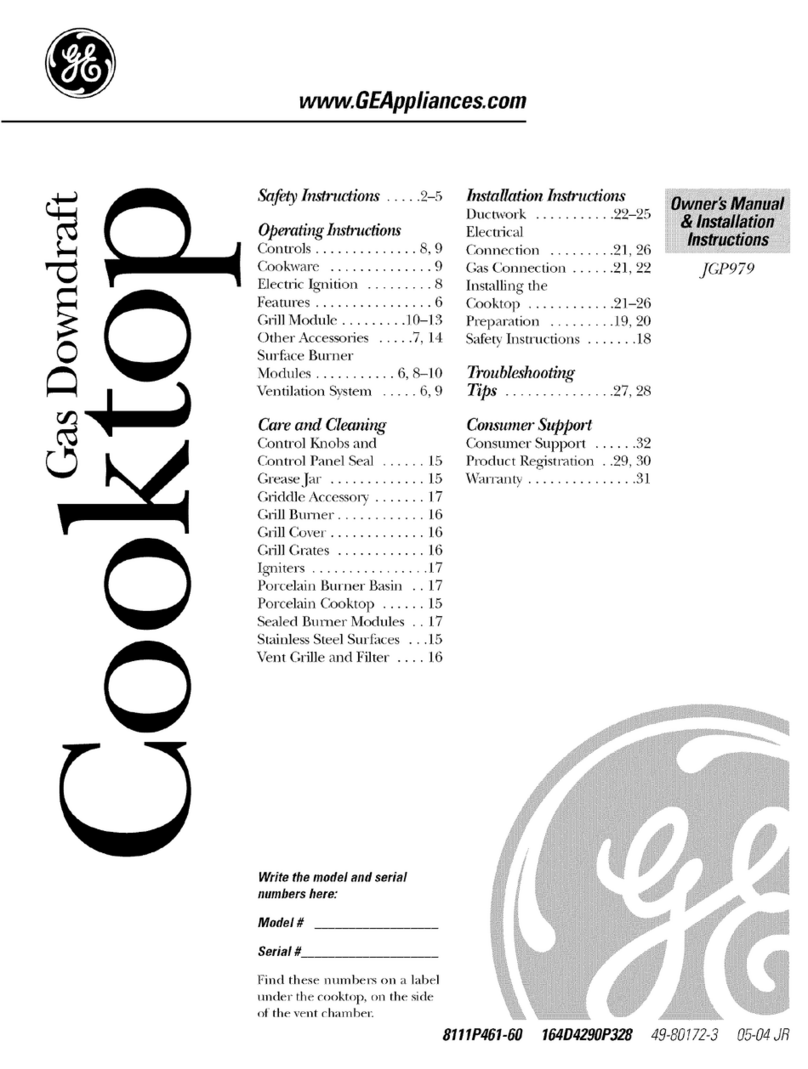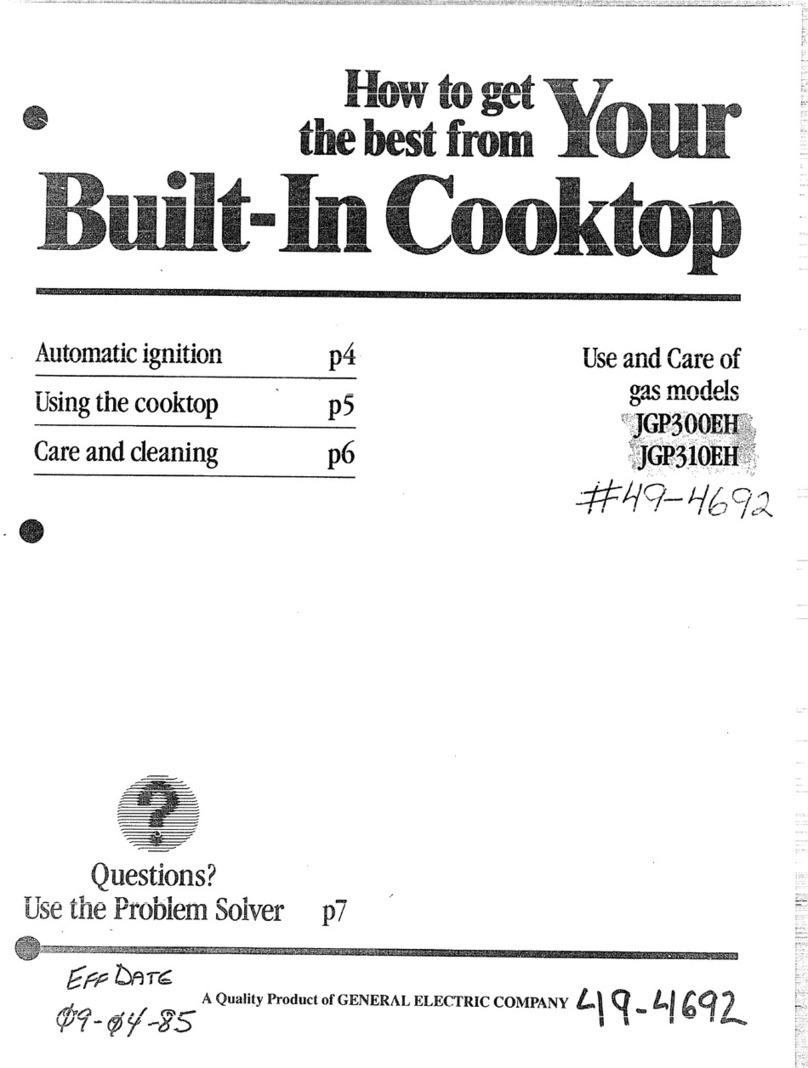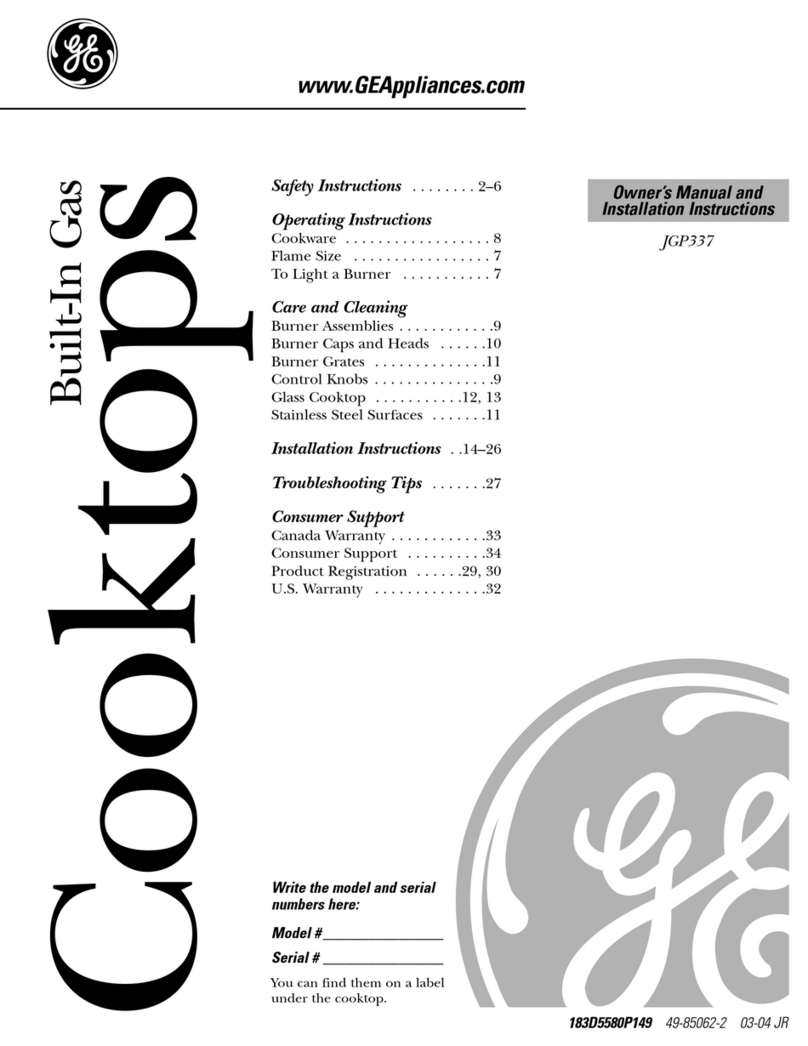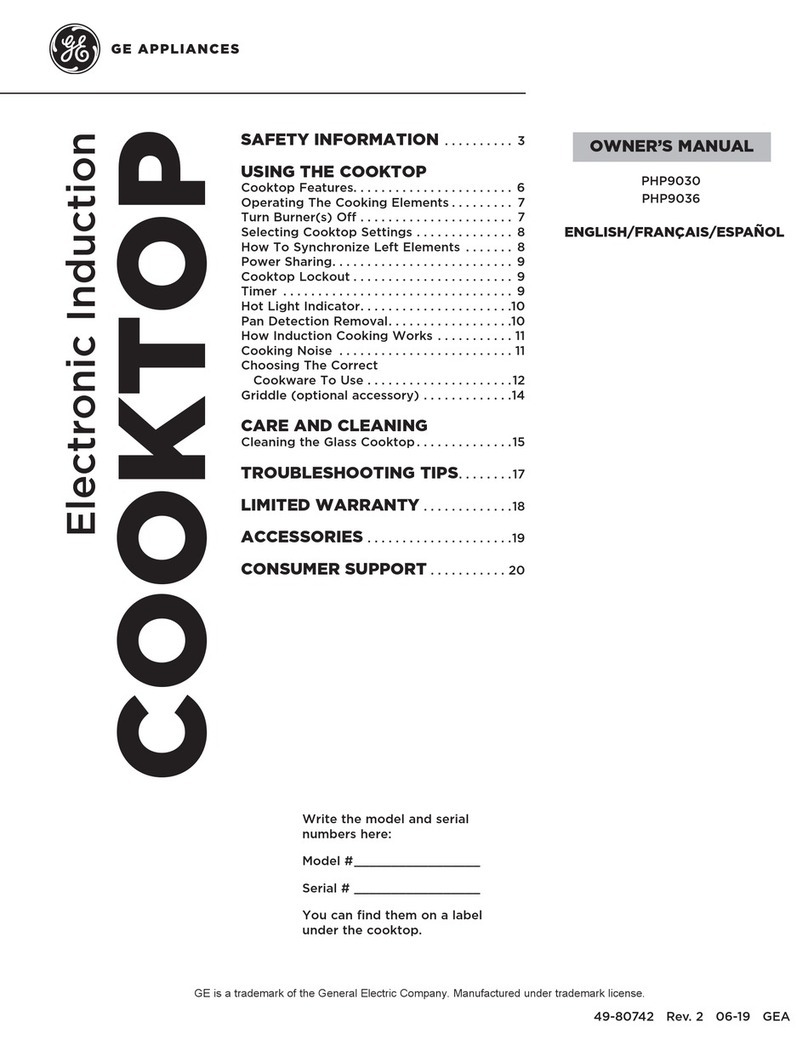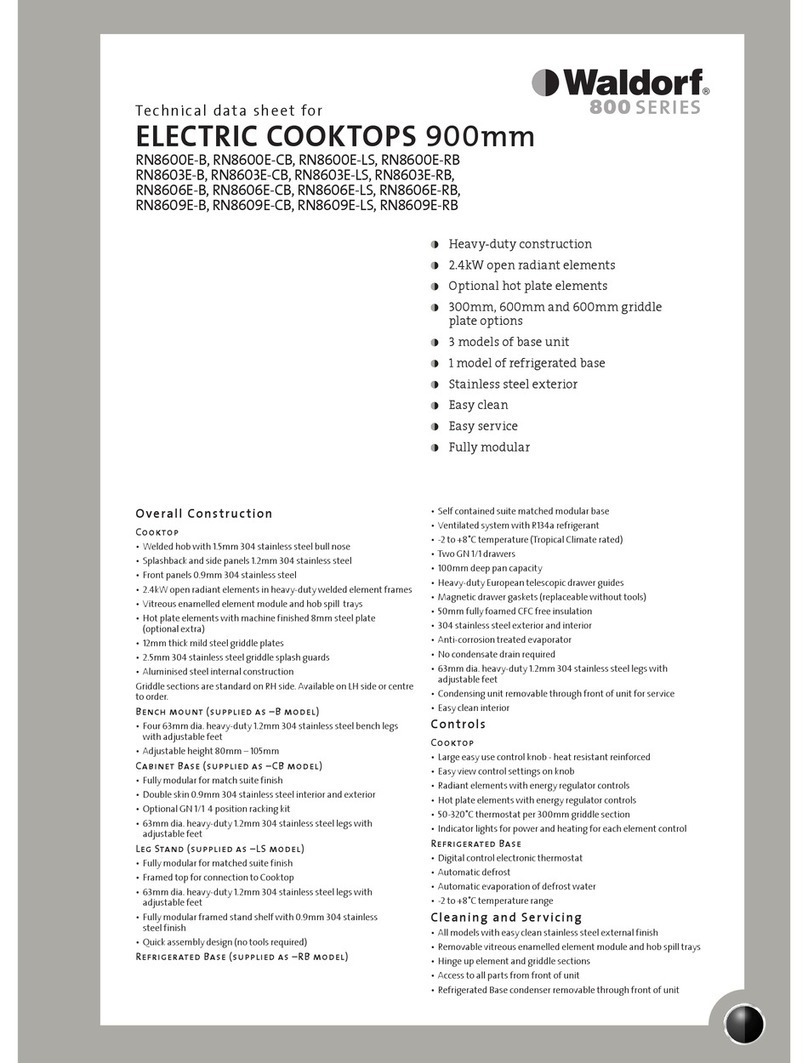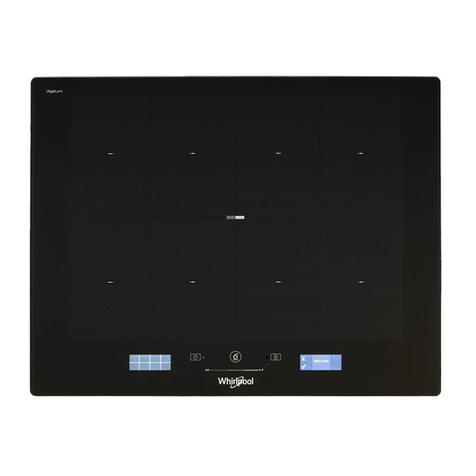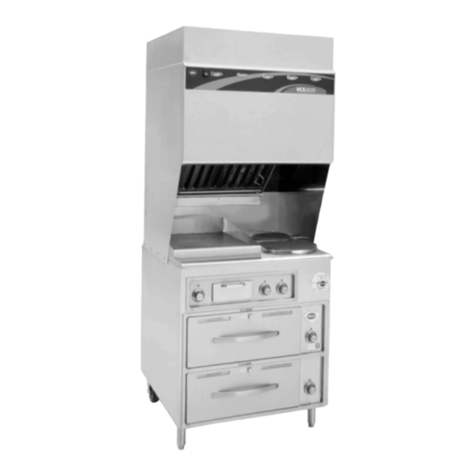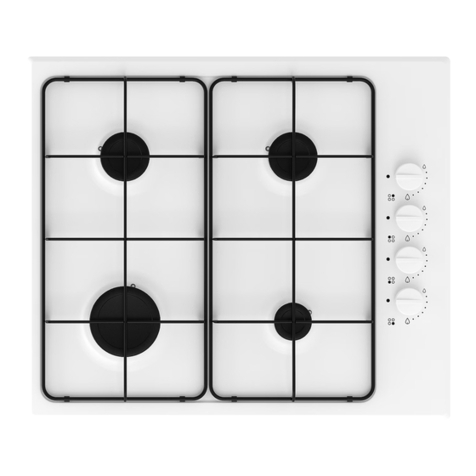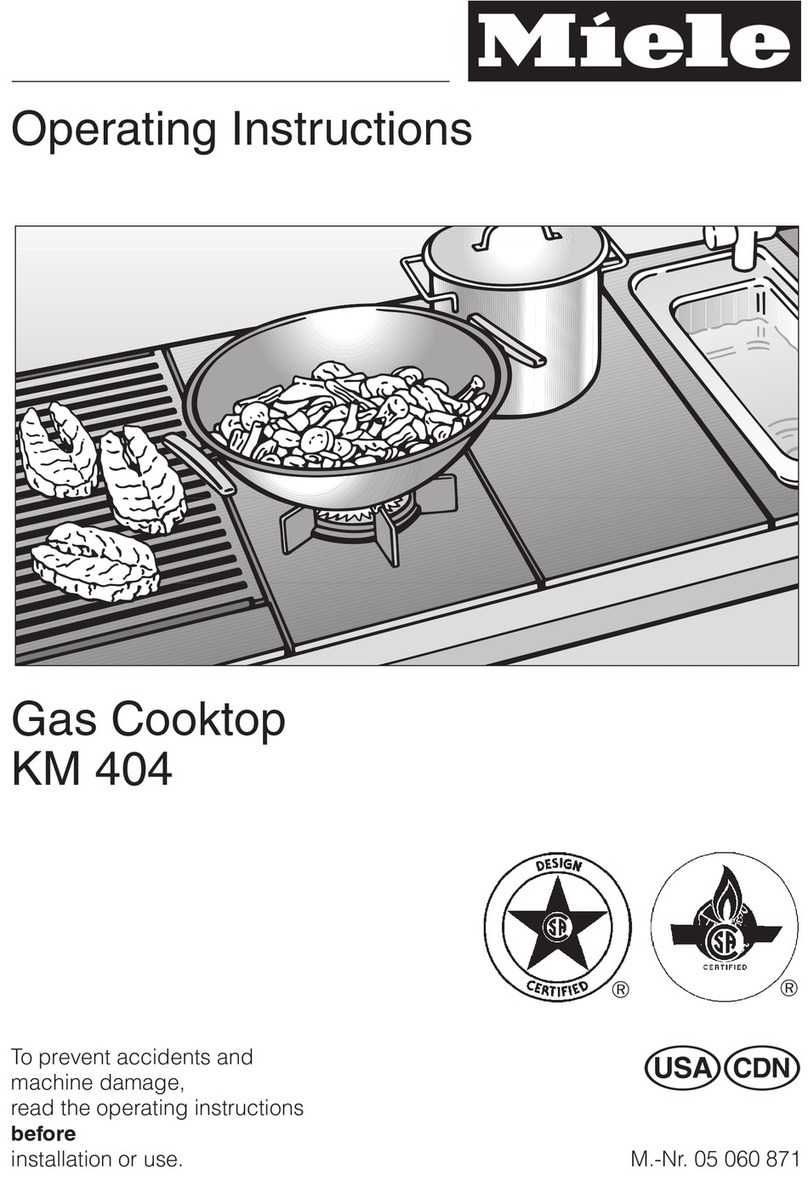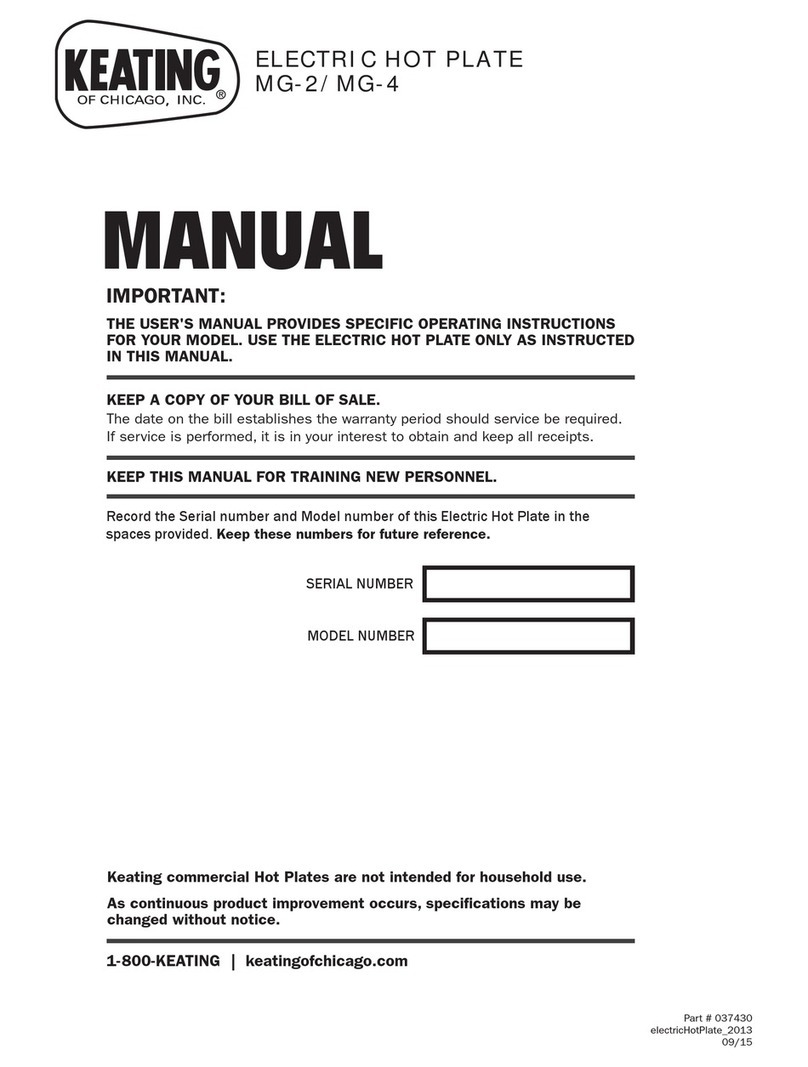Safety Instructions Operating Instructions Care and Cleaning Troubleshooting Tips Consumer Support
3
GEAppliances.com
■For your safety, never use your appliance
for warming or heating the room.
■Do not use water on grease fires. Never
pick up a flaming pan. Turn the controls
off. Smother a flaming pan on a surface
unit by covering the pan completely with
well fitting lid, cookie sheet or flat tray. Use
a multi-purpose dry chemical or foam-type
extinguisher.
■Flaming grease outside a pan can be put
out by covering with baking soda or, if
available, by using a multi-purpose dry
chemical or foam-type fire extinguisher.
■Do not flame foods on the cooktop. If you
do flame foods under the hood, turn the
fan on.
■Do not let cooking grease or other
flammable materials accumulate on
the cooktop.
■Do not touch surface units. These surfaces
may be hot enough to burn even though
they are dark in color. During and after
use, do not touch, or let clothing or other
flammable materials contact the surface
units or areas nearby the surface units;
allow sufficient time for cooling first.
■Potentially hot surfaces include the
cooktop and areas facing the cooktop.
■To minimize the possibility of burns,
ignition of flammable materials and
spillage, the handle of a container
should be turned toward the center of
the cooktop without extending over any
nearby surface units.
■Always turn the surface unit control to off
before removing the cookware.
■To avoid the possibility of a burn or
electric shock, always be certain that the
controls for all surface units are at off
position and all coils are cool before
attempting to lift or remove the unit.
■Do not immerse or soak removable surface
units. Do not put them in a dishwasher.
■Use proper pan size—Select cookware
having flat bottoms large enough to cover
the surface unit heating element. The use
of undersized cookware will expose a
portion of the surface unit to direct
contact and may result in ignition of
clothing. Proper relationship of cookware
to burner will also improve efficiency.
■Never leave surface units unattended
at high heat settings. Boilovers cause
smoking and greasy spillovers that may
catch on fire.
■Be sure the drip pans are not covered and
are in place. Their absence during cooking
could damage cooktop parts and wiring.
■Do not use aluminum foil to line the drip
pans. Misuse could result in a shock, fire
hazard or damage to the cooktop.
WARNING!
SAFETY PRECAUTIONS

